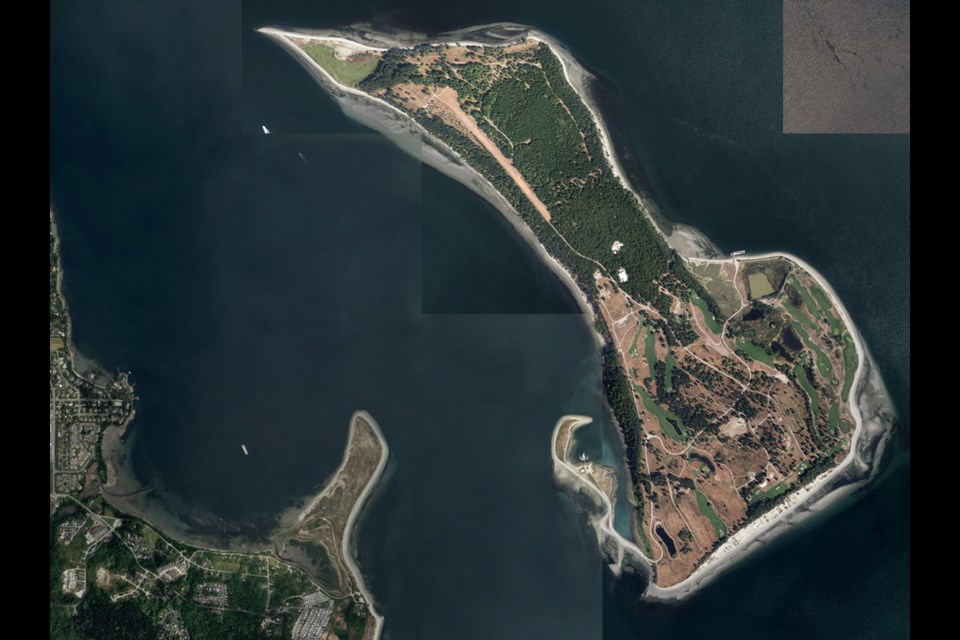An exclusive, master-planned community for the wealthy and well-connected is being planned for a portion of James Island, off Sidney.
It appears a deal has been struck between the island’s owner, billionaire Craig McCaw, and Arizona-based Discovery Land Corp. to establish an idyllic getaway for the rich and powerful.
According to the most recent issue of Discovery Life magazine, the in-house magazine for the development company, McCaw said he had found a partner in Discovery that would preserve the land while expanding its population. McCaw told the magazine he was questioning if he wanted to maintain the island’s 18-hole Jack Nicklaus-designed golf course just for himself, family and friends.
McCaw bought James Island in 1994 for $26 million from a development company that had planned 175 homes with a marina and golf course.
He completed the golf course begun by the previous owners but scrapped the residential plans.
The island has a 5,000-square-foot main house, guest cottages, manager’s residence, pool house, private airstrip and a western-themed village housing a library, full gym and kitchens.
The undated Discovery article noted there was no master plan, but it expected the community to be one of Discovery’s smallest, with fewer than 100 homes sitting on two-to-five acre lots.
Discovery has 23 luxury residential private club communities in the U.S., Mexico, Dominican Republic, Bahamas and West Indies.
Its members reportedly include Nike co-founder Phil Knight, Bill Gates and athletes such as Tom Brady, Lance Armstrong and John Elway.
It was Victoria-born former NHLer Russ Courtnall who appears to have introduced James Island to Discovery.
According to the magazine, in 2012, when McCaw listed James Island for sale for $75 million, Courtnall, who had worked for Discovery founder Michael Meldman, mentioned that it might suit the magazine.
However, the article noted it wasn’t until recently that Meldman got to see it for himself and appreciated its wild nature, relative isolation and proximity to the amenities of a major city.
Meldman was quoted in the article as saying because the island is private, it offers a sense of intimacy that is perfectly suited to Discovery. “It is exactly the kind of place we know our members will want to experience and be a part of,” he said.
Discovery’s president for the James Island project, Rob Corette, was quoted in the article as saying Discovery’s first Canadian project would be developed around the philosophy of sustainability, with importance placed on open spaces and preserving the island’s natural state.
McCaw has a reputation for guarding the natural landscape. Since buying it, he has turned 13 per cent of the island into a permanently protected conservation area where even he isn’t allowed to wander.
On top of scrapping the original development plans, McCaw banned insecticides and smoking and spent $5.3 million remediating the contamination left by an explosives plant that operated on the island from 1913 to 1978.
Explosives manufactured on James Island included TNT (about 19 million kilograms went to the Allies during the First World War), nitric acid, sodium sulphate, black powder, dynamite, nitroglycerine, DNT and nitro-carbonitrates, which are combinations of ammonia nitrate fertilizer and fuel oil.
The plant run by Canadian Industries Ltd., which bought the island in 1913, once employed 800 people, most of whom lived on the island.
In 1988, the island was sold by CIL’s successor, ICI Canada, to the company that wanted to build the 175-home development. Instead, the island was sold again to McCaw’s J.I. Properties in 1994, the same year McCaw and his brothers sold McCaw Cellular Communications to AT&T for $11.5 billion US.
Last year, the 900-member Tsawout First Nation sued the federal and provincial governments for the island, arguing it should have been assigned to them under the terms of the Douglas Treaties of 1852.
They want the government to pay McCaw out for the island and turn it over to the Tsawout.



